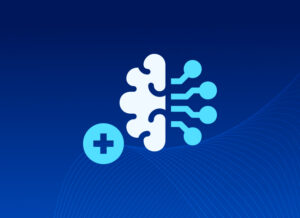Few entities collect as much data as the Department of Defense (DoD). From the Air Force to the Navy, each branch of the military draws on sensor and other intelligence data to gain actionable information in near real time.
Yet even as these branches collaborate strategically and tactically in training and theater, a lack of system and data interoperability limits intelligence-sharing efforts such as those led by the Joint All-Domain Command and Control (JADC2) program.
JADC2 is the DoD’s concept to connect sensors from all the military services—Air Force, Army, Marine Corps, Navy, and Space Force—into a single network based on a zero-trust architecture, machine learning (ML), and artificial intelligence (AI). Envisioned as a single cloud-like environment for the Joint Forces to share intelligence, surveillance, and reconnaissance data for faster decision-making, the effort has been anything but smooth sailing.
Speaking in late 2021, Army Col. Corey L. Brumsey, a member of the JADC2 cross-functional team, cited interoperability—or a lack thereof—as the biggest challenge to the team.
 It’s not surprising. Given the stove-piped and complex nature of DoD systems, getting systems to work together to facilitate data transmission quickly and seamlessly is no small feat. To tackle the challenge, the team is launching a new effort—dubbed the “Interoperability 2.0 Challenge”—that may also incorporate the Five Eyes allies, namely the U.K., Canada, Australia, and New Zealand.
It’s not surprising. Given the stove-piped and complex nature of DoD systems, getting systems to work together to facilitate data transmission quickly and seamlessly is no small feat. To tackle the challenge, the team is launching a new effort—dubbed the “Interoperability 2.0 Challenge”—that may also incorporate the Five Eyes allies, namely the U.K., Canada, Australia, and New Zealand.
But even as these partners find ways to fix JADC2’s system interoperability issues and larger allied coordination efforts, challenges remain. For warfighters to detect potential threats and improve decision-making, the Joint Forces staff’s cross-functional team must also ensure rapid data processing and analysis and high-performance connectivity across JADC2.
AI and ML technologies will power this effort in two critical ways:
-
Cutting Through the Noise With AI and ML
The JADC2 strategy is designed to create a combined command and control system for all DoD (and potentially Five Eyes) data sources. But with more devices connected to the system, the amount of data requiring processing and analysis is unfathomable. Indeed, cutting through the noise to understand and clarify critical threats in cross-domain warfare—in the shortest possible time frame—is beyond the scope of any group of humans. Hence the JACD2 push to adopt AI-powered systems.
Though some analysts raise questions about whether it’s appropriate to reduce the amount of human involvement in military-related decisions, others see AI as “absolutely essential” to JADC2. For example, Brig. John Olson of the Space Force told a panel at the 2021 American Institute of Aeronautics and Astronautics ASCEND space conference for JADC2 to work, AI and ML are enablers that “…make us able to react, and respond, and…make sense of the information, then act upon it.” While others comment AI and ML software is a must “to help prune the data” for users.
Though humans will still have the final say, AI and ML can automate and normalize multi-domain data from disparate sources and branches of the DoD, stitch those data points together, and ask complex questions of the data—all in near real time. JADC2 also intends to use AI and ML to identify targets and recommend the optimal weapon (both traditional and cyber) to engage the target.
With these insights, analysts and operators gain a more complete and near real-time common operating picture. At the same time, commanders get the actionable intelligence they need for more informed decision-making (both tactical and strategic) about simultaneous and sequential operations across all domains.
-
AIOps—Ensuring Observability of Data in Transit
Data is mission-critical, and JADC2 can’t lose access to it. But as information moves across a single discrete system combining domain networks, the cloud, and legacy systems—each architected through a different lens—network and application performance issues are inevitable.
To overcome this problem, JADC2 network professionals will require continuous visibility to properly understand data movement; observe the connections between devices, applications, and connections; and automatically identify bottlenecks before data availability is impacted.
AI and ML are key enablers of this. Using AIOps, which deploys AI and ML to digest and analyze large volumes of data from across the IT environment, network administrators can automate critical network monitoring and management tasks, a necessity in hybrid infrastructures and environments built to interlace data sources.
Furthermore, with AIOps-powered observability, teams can predict the unpredictable. They can anticipate network issues or security threats before they arise, detect anomalies, gain the context they need to remediate, and act ahead of performance impacts. And because AIOps relies on ML, it will continuously improve over time, learning about the JADC2 environment, providing more insight into the probable root cause of issues, and even triggering mitigation workflows so network teams can focus on continuous network optimization.
JADC2 Is Just the Beginning of AI-Powered Multi-Domain Operations
JADC2 is only the beginning of the DoD’s mission to provide secure information sharing across multiple domains. The U.S. Central Command (CENTCOM) is also working to establish a data-centric architecture to share information with more than 50 nations, leveraging AI and ML. With both efforts evolving from planning and exercise to reality, these technologies will loom large as the Joint Forces staff look to turn disparate data sets into highly available and actionable intelligence.
Visit our website for more information on enhancing connectivity and interoperability across systems.







